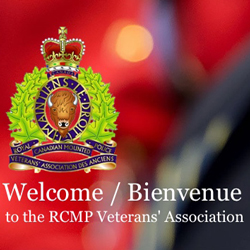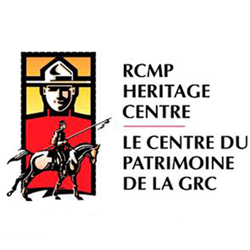Larry Burden’s This Day In The RCMP

The achievements and contributions of the Force have been built upon the individual contributions of many past Veterans. These contributions have largely been forgotten.
Veteran Sgt. Larry Burden ( #35982) served in “E” Division for 20 years has spent over ten years researching and summarizing these achievements by specific date. Nearly every day, Larry sends out an email message with a selection from his work in progress manuscript “This Day In The RCMP” to individuals interested in these historical notes.
In an effort to share his research to a large group, Larry has agreed to permit us to develop a webpage on our website. Each webpage will post Larry’s historical notations over the past week.
If you wish to contact Larry Burden or provide additional information about his research, please email him at larryburden8@gmail.com.
October 7
1913 – In a scene reminiscent of the Beverly Hillbilly’s William Stewart Herron a local horse wrangler, noticed gas bubbling out of an old mine shaft on the Dingman site in Okotoks near Calgary. After he collected samples and discovers oil, he formed a company to drill on the site sparking Alberta’s first oil boom.

Photograph of the grave marker for Frederick Lush (Source of photo – Veterans Affairs – The Virtual war Memorial).
1914 – #5396 Cst Frederick Lush, who was an Imperial Army Reservist, was granted a free discharge to rejoin his colours for service in WWI. He was killed in action on September 24, 1916 in France. Check out additional details on the Veterans Affairs Website here.
1963 – Front de libération du Québec (FLQ) leader Georges Schoeters is given 2 five-year terms for terrorist activities and Gabriel Hudon and Raymond Villeneuve get 12 years for death of Wilfred O’Neill, a watchman at Montreal’s Canadian Army Recruitment Centre.
1991 – #35980 Constable Dale Clarke and Mr. Gabriel Lafferty saved the life of a fisherman who was stranded on his disabled vessel on Great Slave Lake in a violent storm.
1997 – The RCMP is ordered to make reparations of $2 million to former Prime Minister Brian Mulroney for defamatory accusations released during the Airbus enquiry.
October 8
1935 – # 10946 Constable George Campbell Harrison and # 11326 Sgt. Thomas Sellar Wallace were killed at Banff National Park, while attempting to apprehend the three murderers of Constable Shaw. See October 5th.
1971 – The Supreme Court of Canada rules that under the Bill of Rights, Native Indian women cannot be deprived of their Indian status because of marriage to non-Indian.
1975 – Honour Roll Number 151.

Photograph of Constable John Brian Baldwinson (Source of photo – Surrey RCMP Detachment).
#25163 Constable John Brian Baldwinson age 29 was killed in a police motor vehicle accident, in Surrey BC.
At 1:35 am, eight year veteran, Constabe John Baldwinson was working in plain clothes and driving in an unmarked police car south on the Pacific Highway in Surrey, when he passed another police car driven by #28553 Darrel Graves. Suddenly his car disappeared in a cloud smoke and sparks as it careened out of control into a drainage ditch and a pile of steel pipes as he was thrown some 30 feet through air. He was transported to hospital in New Westminster, but was pronounced dead on arrival.
Investigation into the crash revealed that he had hit a horse that had escaped from its pasture and wandered onto the highway. The force of the impact sent the horse through the windshield into Constable Baldwinson and through to the back window.
Constable John Brian Baldwinson was buried at Valleyview Cemetery in Toronto Ontario. He had a wife and two young children.
1989 – #32050 Constable J.R.Gilles Gosselin earned a Commanding Officers Commendation after apprehending an armed and dangerous man at Hedley, B.C.
October 9
1874 – Metis Guide Jerry Potts led Assistant Commissioner James Farquharson Macleod (1836-1894) to the notorious Fort Whoop-Up to discover it abandoned by the whisky traders who fled long before upon hearing of the approach of a large party of horsemen wearing red coats. Instead of occupying the abandoned fort they build a new fort on an island in the Oldman River. The first arrest the Mounties make involves the capture of five whiskey traders with two wagonloads of firewater (a concoction of brandy and pepper), buffalo robes and rifles.
1966 – Ken Ingram was in a bad mood when he appeared at the door of the detachment in Sidney BC. He shot the nightshift guard Mr. McAuley through door of detachment and then locked him in a cell. Then he went on a rampage and shot out the office lights and ripped the phones out of the wall. When #22051 Constable Robert Bouck arrived at the detachment Ingram took a shot at him, hitting his hat brim.
Constable Bouck then called #15622 Sgt. Harry Chambers for back up and shortly thereafter he and a member Saanich Police arrived on scene. The three policemen then searched the building, and arrested Ingram in the detachment basement and recovered the gun. Ken Ingram was sentenced to eight years for attempt murder.
1970 – Honour Roll Numbers 141 and 142.

Photograph of the memorial plaque for Sgt. Robert James Schrader which is mounted in the RCMP Chapel at “Depot” Division in Regina (Source of photo – RCMP Gravesite database).
#15445 Sergeant Robert James Schrader age 41, and #21129 Constable Douglas Bernard Anson age 30, were shot and killed, while investigating a domestic dispute, near MacDowall, Saskatchewan.
Shortly after 5:00 pm, Prince Albert Detachment received a complaint from Edward Neudorf, stating that the day before, Wilfred Robertson had found him with his wife on a deserted country road. He told police that Robertson had tore a large chunk of hair from his wife’s head and then fired a shot at him.
Sgt. Bob Schrader and Constable Doug Anson were in the vicinity of MacDowall, which is approximately 15 miles (24 kilometers) south of Prince Albert, so they decided to take the call. They drove to the Robertson residence, and for some unknown reason, Sgt. Schrader left his Sam Browne holster and revolver in the police car and it cost him his life.
Upon arrival both policemen exited their car and, while Constable Anson went to knock on the door, Sgt. Schrader checked out Robertson’s truck for any evidence related to the assault on his wife. When Constable Anson knocked on the front door Mrs. Robertson opened it and Anson asked if her husband was home. He heard Robertson say, “what does he want” and when the constable replied, “Can I talk to you”, Wilfred Robertson who was standing in the living didn’t answer. As Constable Anson stepped into the house, Robertson shot him in the chest with a high-powered rifle. As Anson stumbled backwards out of the house, Wilfred Robertson yelled, “Now talk” and then fired a second round into the constable’s back.
When Sgt. Schrader saw his partner murdered, the cold reality of his situation hit home. His revolver was inside the police car along with their only radio and he was cut off from both items. So he sought shelter behind some trees and attempted to talk to the assailant, asking him to help his partner. Robertson calmly replied, “I’ll help your man. I’ll help you too!” and then fired three times. The first shot hit the tree Schrader was hiding behind, and the second shot hit him in the abdomen with enough force to knock him to the ground. The third and final shot hit him in the pelvis, fatally wounding the sergeant. As Schrader lay bleeding to death, Wilfred Robertson walked back into his house and fixed himself a meal. After eating, he took Constable Anson’s revolver from his holster and put his rifle in the police car and drove off.
Shortly thereafter the largest manhunt in the history of Saskatchewan ensued, using airplanes, dogs and several teams of men. The stolen police car was quickly found, but due to a cold night of snow, the dogs could not pick up a track Wanted posters were distributed throughout the west but Robertson had disappeared without a trace. The following spring, his frozen body was found in a dense thicket about 1 mile (1.6 kilometers) from his house. He had taken his own life.
Sgt. Bob Schrader had served the RCMP for 22-years, and left behind a wife and five children, including two sets of twins. Cst. Doug Anson had eleven years service and had only been married for two months.
Both police officers were buried side by side with full honours at the RCMP cemetery at Depot Division in Regina.
1984 – Peter Greyson sentenced to 89 days in jail for pouring red ink on an original copy of the 1982 Constitution Act. The Toronto art student was protesting the former Liberal government’s decision to test cruise missiles in Canada.
1984 – The Medal of Bravery – Constable Brian M. Powell M.B.
#37760 Constable Brian Powell responded to a report of suspected house fire, at Bell Island, Newfoundland. When he arrived at the house, he knocked on the door but received no answer, so he proceeded to check the windows where he found smoke coming from a broken pane. He then kicked the door open and hampered by poor visibility and smoke, he began a room-to-room search, finding a man unconscious on the floor of a bedroom. Powell then hoisted the man over his shoulder and attempted to retrace his steps through the smoke, but found his passage blocked as the walls exploded into flames. He then retreated to the back bedroom where he was briefly overcome by the smoke and heat. Recovering, he kicked out the bedroom window then he and the victim dove out of the window onto the ground three meters below. Then he dragged the victim away from the burning building and called for an ambulance while he monitored the vital signs of the victim until help arrived.
On March 6, 1987 Constable Brian M. Powell was awarded the Medal of Bravery. Sadly, Constable Powell’s career was cut short after only eleven years, when he died in 1993.
October 10
1937 – While traveling to Vermillion aboard the river boat “Weenusk” #11671 / O.389 Constable Leslie Grayson, dived into the Peace River fully clothed to rescue Earl Blanchard who had fallen overboard. Grayson joined the RCMP in 1932 and during WW2 he served (# C.42003) with the Number One Provost Corps from November 1st 1939 to May 1st, 1946 and retired as a Superintendent in 1965.

Quebec City – Photo President John F. Kennedy, his wife Jackie and members of the RCMP Escort (Source of photo – Raoul Carriere’s family photo collection)
1964 – 38 year old Queen Elizabeth II’s visits the National Assembly in Quebec City for the 100th anniversary of the Charlottetown and Quebec preparatory meetings that led the signing of the British North America Act.
The occasion is marred by demonstrations by students and separatists who see the visit as an opportunity before the world’s media to present the visit as an affront to the separatist cause for independence. As the cameras are rolling the protest becomes a riot and event is dubbed ‘le Samedi de la Matraque’ (Saturday of the baton), when the Provincial police used nightsticks against the angry crowd.
1970 – Quebec Vice-Premier and Minister of Labour, Pierre Laporte 1921-1970 is kidnapped from his home in Saint-Lambert, Quebec by the Front de Liberation du Quebec FLQ.
1985 – After an armed man barricaded himself inside a two-room house on the Reserve near Sucker Lake, Manitoba, Special Constables R.W. Ogemow and T. Blacksmith of Island Lake Detachment joined Constable J. Butler from Norway House Detachment at the scene. Further complicating the already dangerous situation was the fact hat the often violent and unpredictable gunman was sober and had a lengthy record of weapons offences. Undaunted, Constables Butler and Ogemow entered the house and as the suspect kept a rifle aimed at them, they proceeded to talk to the man in Cree and English. The men stayed with the gunman for over two hours and negotiated with him until he finally agreed to put down his weapon and surrender. In recognition of his high degree of professionalism, Special Constable Ogemow was awarded a Commanding Officers Commendation for bravery.
October 11
1899 – The Boer War begins in South Africa. The conflict was between Britain and the Boers, also known as Afrikaners. The Boers were the descendants of the original Dutch settlers of southern Africa who resented the Anglicization of South Africa and Britain’s anti-slavery policies after Britain took possession of the Dutch Cape colony in 1806. By 1833 the Boers began had enough of living under Britain’s rule and left the area and moved into African tribal territory, and founded the republics of the Transvaal and the Orange Free State. Both communities lived peacefully until gold diamonds were discovered in the area.

Photograph of officers of the 5th Canadian Mounted Rifles heading off to the Boer War (Source of photo – Doug Madill).
The Mounties respond to the call for war by creating the 2nd Canadian Mounted Rifles, a Calvary unit commanded by Commissioner Lawrence William Herchmer and Superintendent Sam Steel became the commanding officer of the newly created Lord Strathconnas Horse. Over 200 members of the force served in the Second Boer war Seven of them were killed in action and did not have their names added to the Honour Roll; They were:
1920 – While traveling to Canada from England aboard the “S.S. Minnedosa” to seek his fortune, John Smaridge happened to meet Superintendent Duffus. The RNWMP officer was returning to Canada with several recruits and they chatted awhile about life in the Mounted Police. During the trip he was sworn in as #9476 Constable Smaridge, becoming the only known person to be sworn in as a member of the Force while in the middle of the North Atlantic Ocean. John Smaridge served until 1953 when he retired as a Sergeant Major.
1939 – Honour Roll Number 63.

Photograph of the RCMP Cenotaph at “Depot” Division in Regina with the name of Constable Norman Alfred Gleadow highlighted in red (Source of photo – Sheldon Boles).
#11046 Constable Norman Alfred Gleadow age 30 was murdered by Ernest Flook at Esterhazy, Saskatchewan.
After receiving a confession from Ernest Flook, regarding breaking into several area stores, Constable Gleadow escorted Flook to his house to search for stolen property. While he was busy examining a club bag in the bedroom, Ernest Flook struck the constable on the back of the head with a hammer with so much force that it tore through his Stetson hat, crushing his skull. As Constable Gleadow lay on the floor unconscious, Flook shot him twice in the chest with a .22 caliber rifle and then fled in the police car.
Upon hearing the gunshots, Flook’s sister rushed to the room and found the constables body and immediately called the police and a manhunt was organized. On of the volunteer searchers happened to be an employee of the local garage that serviced the detachment police vehicles and had recently installed new tires on the stolen car. He was familiar with the unique pattern on the tires and invaluable in tracking the stolen vehicle to the bush 17-miles away.
When the search team closed in on the murderer, Flook shot himself in the head and later died while being transported to the hospital.
Regina born, Constable Norman Alfred Gleadow was buried with full honours at his family plot in Regina. He had eight years service in the RCMP and had only been married for less than one year.

Photograph of Henry Larsen onboard the RCMP St. Roch (Source of photo – Archives of the Vancouver Public Library).
1942 – The St. Roch, under the command of Sergeant Henry A. Larsen, reached Halifax after a two-year voyage. It was the first ship to sail the Northwest Passage by the southern route from west to east. During the voyage the crew endured the worst storms and ice they had ever encountered. They narrowly averted a whirlpool, dealt with mechanical problems including having one engine cylinder break, leaving the ship with only five. They spent two winters frozen in ice during which the crew patrolled the Arctic islands by dog team preparing a census of the Inuit population over a large area of the Arctic.
2002 – The Medal of Bravery – Corporal Kirby Brett Anderson MB and Constable Kevin Tyler Thomson MB
#39183 Corporal Kirby Anderson and #50464 Constable Kevin Thomson responded to a house fire in Port Alberni BC, where they were informed that there was an elderly woman in the burning building. Without any protective equipment, the two officers entered the house where they were met by a wall of thick grey smoke. They called out to the woman, but realized that the frail woman was disoriented and unable to move.
Crawling on their hands and knees in near-zero visibility, the rescuers followed the woman’s voice until they located her in a bathroom. Cpl. Anderson and Cst. Thomson then helped her to her feet and supported her as they walked through the blinding smoke to the front door and to safety.
On June 24, 2005, in recognition of their courage in the face of danger, the two policemen where awarded the Medal of Bravery by the Governor General. In addition, Commissioner Giuliano Zaccardelli, presented both men, with the Commissioner’s Commendation for Bravery in November 2005.
October 12
1899 – The commander of Fort MacLeod Detachment, #620 Corporal Samuel Armour was shot in twice in the hand and thigh when he attempted to arrest Jack Garland for threatening people with a revolver. Even though he had been shot, Corporal Armour succeeded in arresting and charging the gunman.
1968 – Sergeant #17435 Al G. Rae representing the International Amateur Basketball Federation served as one of ten official basketball referees at the XIX Summer Olympic Games in Mexico City. He later went on to referee in the Olympic games in 1972 and 1976.
1979 – The Medal of Bravery – Constable Richard Wilhelm Krenz MB.

Photograph of the Canadian Medal of Bravery.
While off duty #32658 Constable Richard Krenz and John Hiram, a seventeen year old friend, were tending their crab traps in a canoe, when they heard a plane crash into the water in Howe Sound near Squamish BC, The float plane lost its bearings in the thick fog while trying to land and only one person survived the crash.
Constable Krenz and his friend paddled over to the crash site and found the sole survivor struggling to stay afloat. Unable to lift him into their small boat, they proceeded to tow him to a log boom; but as they headed for the boom the canoe capsized throwing the rescuers into the water. In the water, the pair fitted the man with a life jacket and Cst. Krenz then towed him to shore.
On March 9, 1981, Constable Richard Wilhelm Krenz and Mr. John Hiram were awarded the Medal of Bravery.
1995 – Constables #29618 John Pliszka and #42031 Tabor Baldauf responded to a bank robbery in Vernon BC. When they arrived on scene the would-be robber grabbed a hostage and was holding her at gunpoint. The pair successfully convinced the robber to release his hostage and surrender. Both members received commendations.
October 14
1874 – North West Mounted Police start building a post on the Old Man River in Alberta. It is the first police post made of cottonwood logs plastered with clay and contains barracks, stables, a hospital and a blacksmiths shop. The new fort is named Fort Macleod, after Assistant NWMP Commissioner James F. Macleod.
1929 – Yvon Durelle 1929-2007
Canadian light heavyweight boxer was born on this day at Baie Ste Anne, New Brunswick. Durelle started his boxing career in 1947. In 1953 he gained the light heavyweight title of Canada in a 12 round decision over Gordon Wallace. In 1957 he beat Wallace again to take the British Empire light heavyweight crown. In1958 narrowly missed the world light heavyweight title in a battle against Archie Moore, where he knocked Moore down four times, but lost the match to a KO in the 11th round. In1981 Raymond Fraser authored a book about Durelle’s legendary life titled “The Fighting Fisherman: The life of Yvon Durelle.
In 2005, his son #46464 Constable Paul E. Durelle became member of the RCMP when the Moncton Police Service in New Brunswick is absorbed by the RCMP.
1932 – Honour Roll Number 53.

Photograph of the RCMP Cenotaph at “Depot” Division in Regina. The name of Constable Lorne Halliday’s (Reg#7688) name is highlighted in red. (Source of photo – Sheldon Boles).
#7688 Corporal John Lorne Halliday age 34, died from an accidental, self-inflicted gunshot wound in the chest, while stationed at Fort Simpson, N.W.T.
While preparing to set out on a patrol up the Mackenzie River, Corporal Halliday was stowing his gear in the cabin of the boat. When he grabbed his loaded rifle by the barrel that was on the roof of the boat’s cabin, it fired and struck him in the chest. Several other police officers were present when the accident occurred, but could do nothing for him, due to the severity of the wound.
John Lorne Halliday had joined the RNWMP in 1919 at Toronto Ontario and worked in all four western Provinces and the North West Territories. His wife, who was living with her mother in Oakville Ontario, was notified about the tragedy and he was buried at Fort Simpson.
1935 – Honour Roll Number 59.

Photograph of the RCMP Cenotaph at “Depot” Division in Regina with the name of Constable Daniel Miller (Reg.#11150) (Source of photo – Sheldon Boles).
On October 9th, Constable Miller was driving #9801 Sgt. Frederick Lucas from Newcastle to Bathurst New Brunswick. When they approached the bridge at French Fort Cove, the car swerved out of control and slammed into the bridge superstructure at approx 35-miles per hour. Constable Miller was thrown from car and fractured his skull. He died five days later in hospital. Investigation into the cause of the crash revealed that a broken tie rod resulted in a steering failure.
Constable Daniel Miller had four years service and was buried in St. Paul’s Cemetery in Wapella, Saskatchewan.
1948 – #14180 Joseph Daoust received a commendation for completing a 1,650-mile round trip patrol from Halifax to Lake Harbour, NWT aboard the MV “Lake Harbour”.
1968 – #23311 Constable Andrew G. Vos received a Commissioners Commendation for rescuing Edgar Kutukaik who had fallen through the ice in Tuktoyaktuk, NWT. Kutukaik was clinging to edge of ice and Constable Vos, crawled out to him and removed his parka and tossed it to the victim. Edgar Kutukaik then gripped the parka with his teeth and Vos pulled him out of the water to safety.
1977 – #25657 Corporal Kenneth A. Craig of Fort Good Hope Detachment in the NWT, earned his second Commanding Officers Commendation for Bravery after he apprehended a man, despite being stabbed in the abdomen with a knife. (Also see March 27, 1977)
1993 – Two constables were hospitalized for smoke inhalation, after they succeeded in rescuing eight people who were trapped inside a burning apartment building in Wainwright Alberta. As a result #35014 Clifford. L. Gerow and #41095 M.M. Ireland were awarded the Commissioner’s Commendation for Bravery.
October 15
1912 – Motor car adventurers Thomas Wilby and Jack Haney finally reached Port Alberni, British Columbia, after completing the first cross-Canada motorcar trek. The cross-country adventure took them 52 days to complete. The pair spent 41 days driving in their Reo automobile. When they reached the Pacific Ocean they dipped the vehicle’s tires in the water. They didn’t see a single traffic cop the entire trip!
1941 – In order to support the war effort so more explosives can be manufactured, the Federal Government prohibits the private use of glycerin.
1992 – Talwinder Singh Palmar, a Sikh militant who was the prime suspect in the 1985 Air India bombing is killed in gun battle in New Delhi, India with Indian police. Palmar had been arrested in 1985 for the bombing but was later released.


 October 9, 2017
October 9, 2017 






